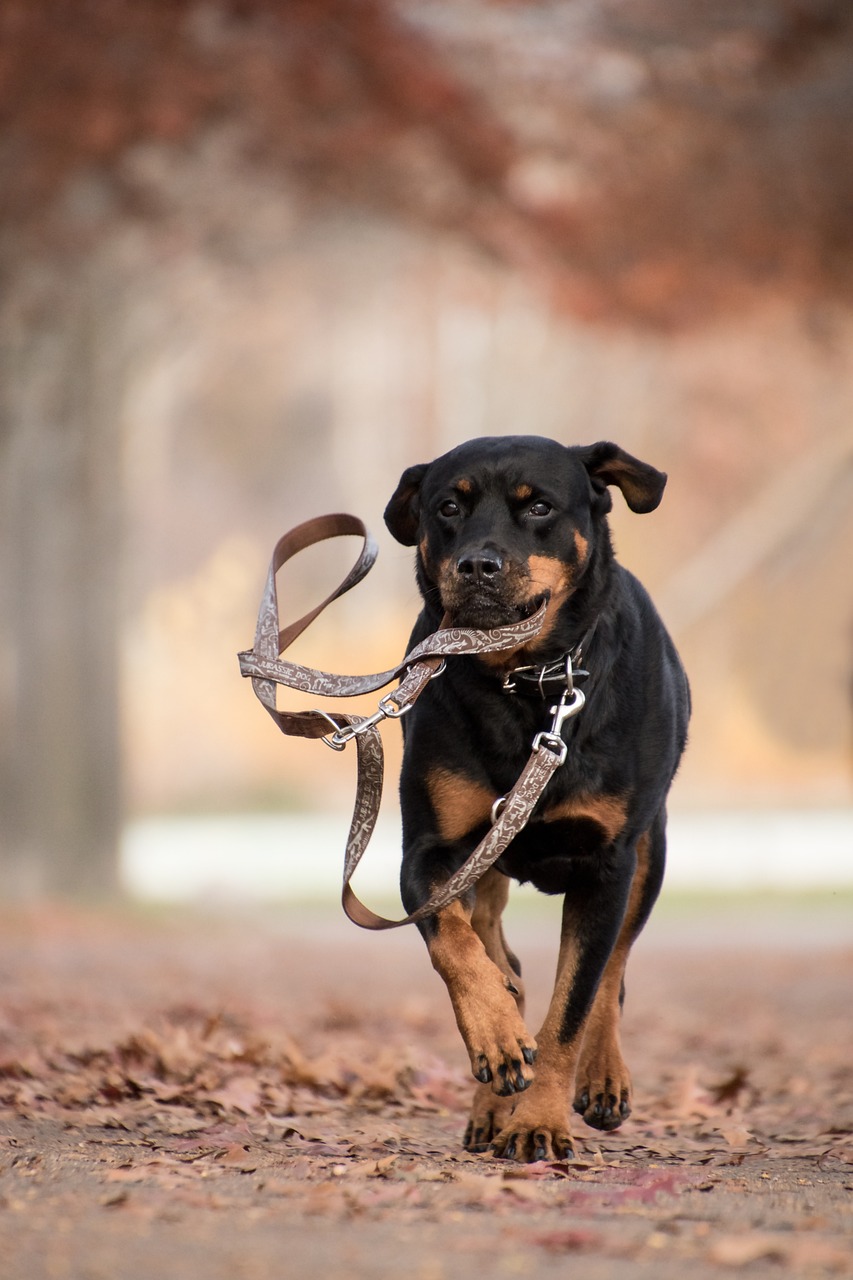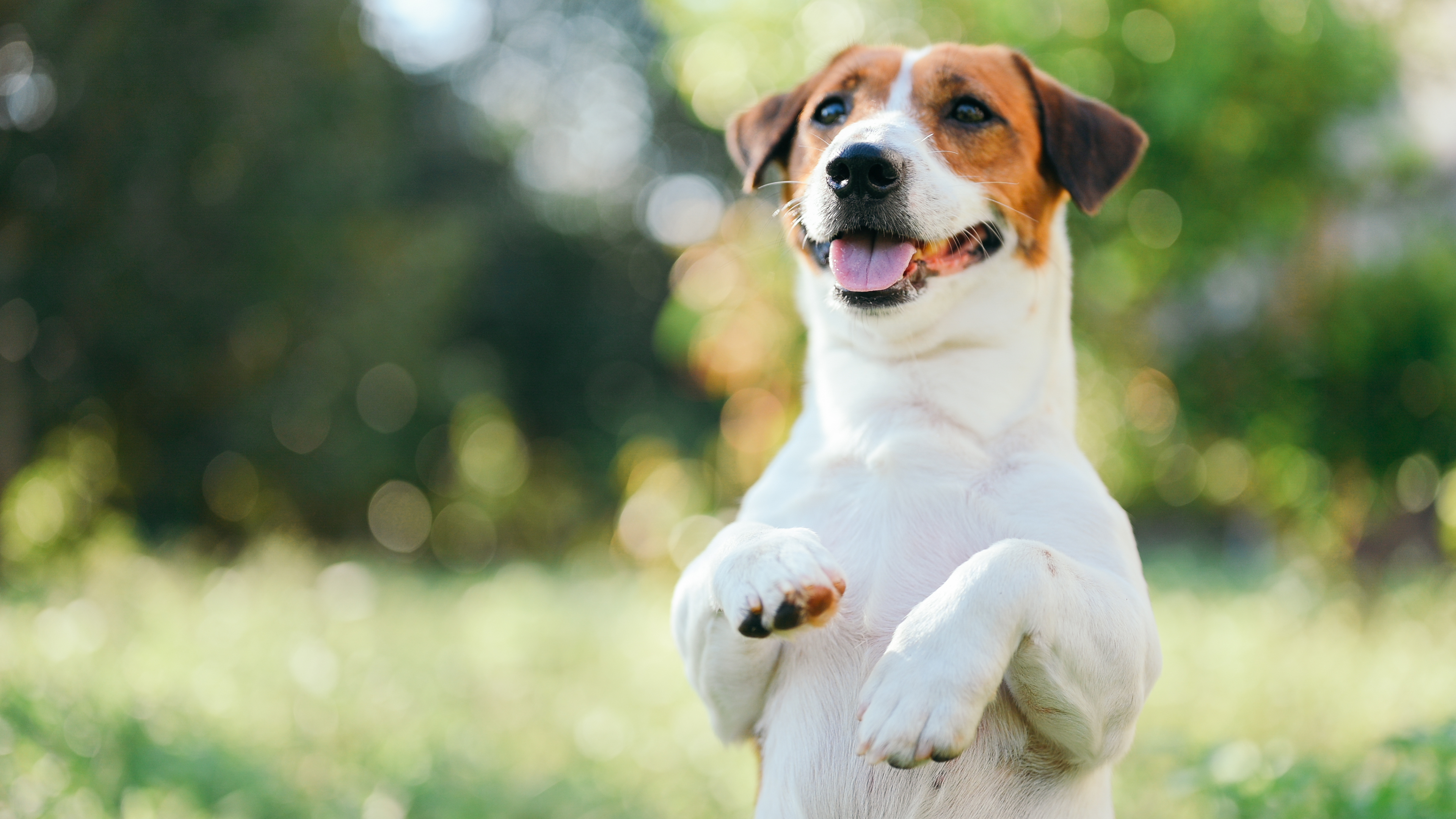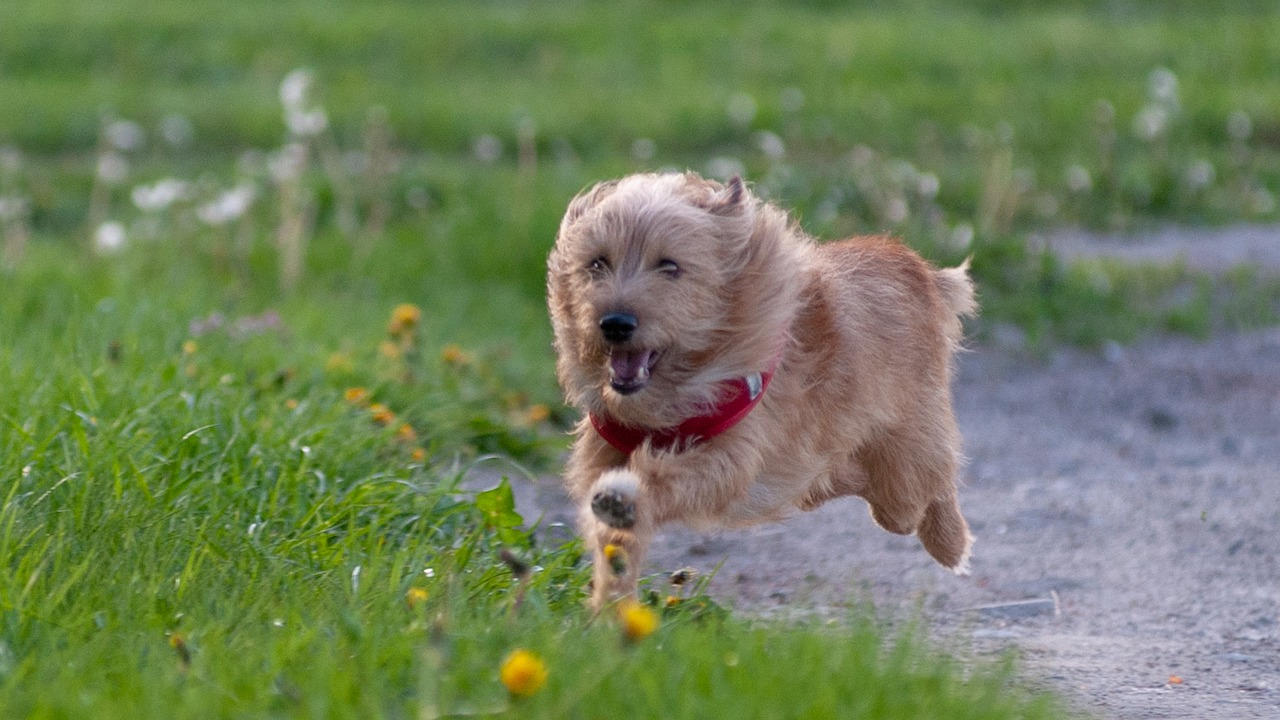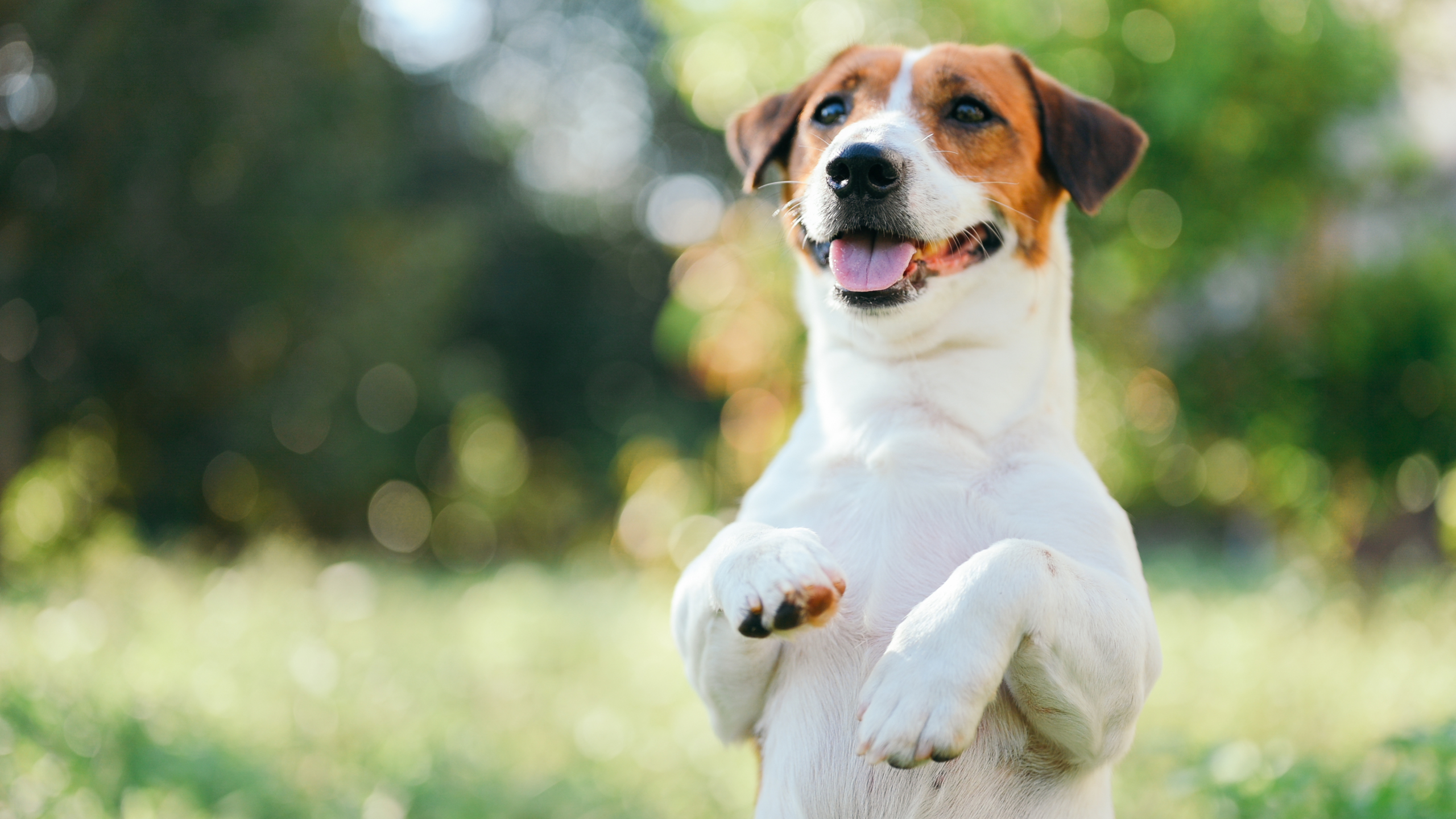What are dog buttons?
Ever wished you could have a real conversation with your dog? Dog buttons might be the game-changer you’ve been waiting for! These nifty gadgets are essentially customizable, recordable buttons that you can program with specific words or short phrases. When your dog presses one, it plays the recorded message out loud. Imagine your pup pressing a button that says, “walk,” when they want to go out!

(Photo Credit: primeimages | Getty Images)
The real magic of dog buttons lies in their ability to bridge the communication gap between humans and canines. They offer a way for dogs to express their needs, desires, and even some of their thoughts. Many dog owners have started using these devices to better understand what their dogs want, making everyday interactions more fun and meaningful.
So how do these buttons work? Each button is designed to be easy for a dog to press with their paw or nose. You record a specific word or phrase onto the button, such as “food,” “play,” or “outside.” When your dog presses the button, it plays the recorded message. Over time, dogs can learn to associate pressing the button with getting what they want, like food or a trip outside.
- Durability: These buttons are built to endure repeated pressing by enthusiastic paws.
- Clear Audio: The recordings should be clear and easily understandable.
- Customizable: You can record any word or phrase that you think your dog might use.
Dog buttons come in different shapes, sizes, and colors, allowing you to choose ones that best fit your dog’s needs and your home decor. Whether you have a small pup or a large dog, there are buttons suitable for every paw size!
Are dog buttons suitable for all dogs? While any dog can potentially learn to use these buttons, how quickly and effectively they pick it up can depend on their breed, age, and individual personality. For example, highly intelligent breeds like Border Collies or Poodles might grasp the concept quicker than some other breeds. But don’t let that discourage you! With enough patience, consistency, and positive reinforcement, most dogs can learn to use these amazing tools.
In short, dog buttons are a fun and innovative way to add a new layer of communication with your furry friend! Imagine the joy and excitement of your dog being able to “tell” you what they want or need through a simple press of a button. It’s a rewarding experience that strengthens the bond between you and your pet, making life together more enjoyable and interactive.
How dog buttons work
Each button in the dog buttons system is designed with a focus on ease of use for your furry friend. They’re built to be easily pressed with a dog’s paw or nose, triggering the pre-recorded message to play. The process begins when you record a specific word or phrase onto the button. This message can range from everyday necessities like “food” or “water” to more complex requests like “outside” or “play.” When your dog presses the button, they hear the recorded message, which helps create an association between the button and the action or object it represents.
A key part of the learning process involves the dog understanding that pressing the button results in receiving what they want. For instance, you could record “treat” on a button and press it each time before giving your dog a treat. Over time, your dog will associate pressing the “treat” button with receiving a treat. This kind of conditioning is similar to how dogs learn commands and tricks through repetition and reward.
“Dogs have the cognitive ability to learn and understand new commands with consistent training and repetition,” notes a study on canine behavior. This understanding extends to learning to use dog buttons effectively.
While some dogs might pick up on the concept quickly, others might need more time and patience. It’s essential to keep the training sessions positive and rewarding. Each time your dog successfully uses a button, reward them with treats, praise, or their favorite toy. This reinforcement helps solidify their understanding and encourages them to keep using the buttons.
Another factor to consider is the variety and number of buttons available. Start with a few basic words that are relevant to your dog’s daily routine. As they become comfortable with those, you can introduce more buttons with different words or phrases to expand their vocabulary. For example, once your dog consistently uses “food” and “outside,” you might add buttons for “play” or “bathroom.” Additionally, some dog owners have customized their buttons to include their dog’s name or other unique phrases that are meaningful in their household.
- Repetition: Consistent use of the same words and actions will help your dog understand and remember.
- Rewards: Positive reinforcement with treats, praise, or toys reinforces the behavior you want.
- Patience: Each dog learns at their own pace, so be patient and encouraging throughout the process.
It’s also beneficial to place the buttons in locations that are easily accessible to your dog and related to their use. For example, a button for “outside” might be placed near the door, while a button for “food” could be near their feeding area. This spatial association can further help your dog understand the purpose of each button.
Training your dog to use buttons
When starting the training journey with dog buttons, it’s important to begin with the basics. Consistently model the desired behavior by pressing the button and saying the corresponding word. For instance, if you press the “walk” button, take your dog for a walk immediately afterward. The key is to create a predictable pattern that your dog can understand and follow.
As your dog starts to grasp the concept, gradually reduce the modeling and encourage them to press the buttons themselves. Reinforcement is vital in this phase. Each time your dog correctly uses a button, reward them with their favorite treat, enthusiastic praise, or a fun play session. This positive reinforcement builds a strong association and motivates them to continue using the buttons.
To make the process smoother and more engaging, keep training sessions short and fun. Dogs can lose interest or become frustrated if the sessions are too long or monotonous. Aim for multiple short sessions throughout the day rather than one lengthy one. This approach helps maintain your dog’s enthusiasm and keeps the learning experience enjoyable.
Here’s a helpful guide to get started:
| Step | Action | Result |
| 1 | Choose a button with a basic word (e.g., “walk”). | Initiates the learning process with a familiar term. |
| 2 | Press the button and say the word (“walk”) clearly. | Your dog begins to associate the sound with the action. |
| 3 | Immediately perform the action (take your dog for a walk). | Reinforces the word with the activity. |
| 4 | Encourage your dog to press the button and reward them. | Cement the connection between pressing the button and the resulting action. |
While repetition and patience are essential, you must pay attention to your dog’s needs. If they seem uninterested or tired, it might be a good idea to take a break and resume training later. Pushing too hard can lead to frustration, which can hinder the learning process.
Interesting thought: Could dogs potentially learn to ask complex or even abstract concepts using these buttons? For example, what if your dog could tell you they are feeling unwell or anxious using specific buttons? This opens up a fascinating area of exploration in canine communication. Have you ever wondered what thoughts your dog might be trying to convey?
By creating a supportive and positive learning environment, you’ll help your pup become a confident communicator, eager to share their needs and desires. Engaging in this process not only enhances your bond with your furry friend but also provides mental stimulation, making daily interactions more enriching for both of you.
Choosing the first words
When deciding which words to start with, you may want to consider your dog’s daily routine. What are the most frequent activities or needs that your pup typically experiences? This might include words like “outside,” “eat,” or “water.” If your dog is very playful, you might also want to start with “toy” or “play.” The familiarity of these everyday actions can help your dog quickly associate the button with the corresponding word and action.

(Photo Credit: primeimages | Getty Images)
It’s best to begin with just a few buttons, usually around three to five, to avoid overwhelming your dog. Here’s a step-by-step guide to set you on the right path:
- Select the words: Choose words that represent common activities or needs. Words like “food,” “outside,” and “play” are perfect starters.
- Record the words: Use clear and simple recordings for each button. Speak slowly and clearly to ensure the message is understood by your dog.
- Place the buttons thoughtfully: Position the buttons in locations that are logical for their use. For example, the “outside” button could be near the door, and the “food” button near the feeding area.
- Consistency is key: Every time you engage in the activity associated with a button, press it and say the word. Over time, your dog will begin to make the connection between the button press and the activity.
Tip: To make things more interesting for your dog, you can mix up the rewards. Sometimes, a treat might be in order, while other times, a fun play session or a good belly rub will do the trick. This variety helps keep the training engaging and enjoyable for your pup.
As your dog becomes comfortable using a few basic buttons, you can gradually introduce more complex words or phrases. Observe how your dog interacts with the buttons and respond to their progress with appropriate rewards and reinforcements. This incremental approach ensures that learning remains a fun and rewarding experience for your four-legged friend.
Benefits and considerations of dog buttons
Using dog buttons can do wonders for your relationship with your pet and enhance their mental agility. By enabling dogs to “talk,” you’re not only giving them a voice but also tapping into their cognitive strengths. The most apparent benefit is the improved understanding between you and your dog. Imagine your dog pressing a button to say “walk” or “hungry.” This clear communication can significantly reduce frustration and guesswork in understanding your dog’s needs.
Another considerable benefit is the mental stimulation these buttons provide. Dogs are intelligent creatures that thrive on mental challenges, and learning to use buttons can be an exciting and fulfilling activity. It keeps their minds engaged, preventing boredom that can lead to unwanted behaviors such as chewing or excessive barking.
What to keep in mind:
- Patience is essential: Not every dog will catch on immediately, and that’s okay. Consistency and positive reinforcement go a long way.
- Adapt to your dog’s pace: Some dogs might pick up quickly, while others may need more time. Tailor your training sessions to your dog’s learning style.
- Engagement is key: Keep training sessions short and fun to maintain your dog’s interest and enthusiasm.
It’s also worth noting that while dog buttons offer many benefits, there are some considerations to keep in mind. Different dogs will have varying responses to using these buttons based on factors like breed, age, and individual personality. Initially, it might seem like a slow process, but perseverance and enthusiasm will keep your dog motivated.
To see real-life examples and get more tips on how to use dog buttons, visit this link.

